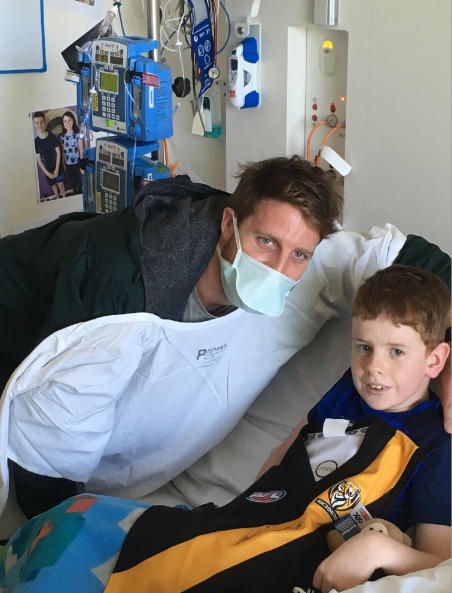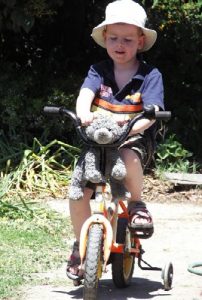Blake’s Story
Who is Blake?
Blake was born in 2006 in Ballarat, Victoria. On the day of his tenth birthday party, his parents noticed unusually large bruises on his arms and legs. Concerned, they took Blake to see the family GP. A blood test showed that the situation was dire – he had no platelets in his blood and was bleeding out internally. His parents were told to get him to the hospital immediately. A few days later, Blake was diagnosed with severe aplastic anaemia, an aggressive form of bone marrow failure.
In 2017, Blake had a bone marrow transplant and spent much of the year in hospital. He faced complications from both the severe aplastic anaemia and the treatment he received. One of his heart valves was severely damaged, his digestive system cell membrane began to break down, his kidneys started to fail, his bones became brittle, and he temporarily lost his vision. But he never stopped fighting.
Since 2018, life for Blake has been a roller coaster. While some aspects of his disease are now under control, he is still far from out of the woods. Because his body doesn’t produce immunoglobulin (antibodies), he is severely immune compromised and requires monthly transfusions. In 2021, Blake was admitted to the Royal Children’s Hospital more often than any year since 2017. Specialists are still at a loss as to the treatment required to cure his illness.
“THE INCREDIBLE FIGHT THAT BLAKE HAS DISPLAYED NEEDS OUR SUPPORT”
PAUL ROOS

REECE CONCA (RICHMOND FC) & BLAKE ONLY DAYS BEFORE TRANSPLANT
What is bone marrow failure?
Bone marrow is the body’s factory for healthy blood cells. In bone marrow failure syndromes (BMFS), the body becomes unable to produce healthy blood cells, causing significant disruptions to health, such as low blood-oxygen levels, internal bleeding a compromised immune system.
BMFS are rare, complex and highly debilitating diseases, and diagnosis is often slow and difficult. Approximately 160 Australians are diagnosed with BMFS each year and, distressingly, most of them are children and young adults. Treatment is so aggressive that it often leads to other ongoing health issues.
Sadly, 50% of people diagnosed with a BMFS will die from the condition. This is not acceptable. Currently, the only curative treatment is a bone marrow transplant, which carries inherent risks and complications.
Would you like to learn more?
If you have any questions or queries on Blake’s Army, whether it be anything to do with the Blake’s Army Reserve, the Blake’s Army Leadership Program, how to make a fully tax deductible DONATION as a business or as a member of the general public……..or for that matter…….anything at all that you need clarified, please let us know and a member of the Blake’s Army team will get back to you promptly.
Blake’s Army Limited ABN : 78653877573
Blake’s Army Limited ACN : 653 877 573
Blake’s Army Limited is a fully endorsed Health Promotion Charity.
As per the Australian Business Register, Blake’s Army Limited is DGR (Deductible Gift Recipient) certified meaning that all donations of $2 or more are fully tax deductible.
To confirm the Blake’s Army Limited charity status, click on the following link to the Australian Business Register:





